Who vs Whom: What’s The Difference?
Today, we’re diving into one such puzzling pair:
“Who” and “Whom.”
These two might seem like they’re playing a game of musical chairs in sentences, but each has its own place and purpose.
Short answer
“Who” is like the outgoing friend who’s always the subject of the sentence – the one doing the action.
“Whom” is more like the chill friend who’s often the object – the one receiving the action.
So, if you’re up for untangling the mystery of “Who” vs “Whom,” stick around.
Definition of Who
Awesome, let’s jump into “Who.”
When you use “who,” you’re usually asking or talking about the person who is doing something or the one in the spotlight.
For example, if you ask, “Who made this awesome playlist?” you’re trying to find out the person behind the action, the one who created the playlist.
OR
In a sentence like, “She’s the one who solved the mystery,” “who” is pointing out the person who did the solving.
Definition of Whom
Now, let’s tackle “Whom.”
“Whom” is used when you’re talking about someone who is the object of the action – basically, the person receiving the action.
For example, if you’re asking, “To whom should I address this letter?” you’re trying to find out who will receive the letter.
OR
In a sentence like, “Whom did you invite to the party?” “whom” is asking about the people who were invited, not the one doing the inviting.
You’ll typically see “whom” after prepositions, like in “For whom is this package?”
OR
“With whom are you going to the concert?”
So, remember: if the person is receiving the action, “whom” is the word you want. It’s all about the receiver, NOT the doer.
Etymology and Historical Usage
Let’s dive into the history of “who” and “whom”.
Starting with “who,” this word has deep roots in the English language, tracing back to Old English as “hwa.” It comes from the Proto-Germanic “*hwaz,” which is related to the Latin “quis” and the Greek “kis,” indicating a long-standing use across different languages to ask about a person.
Historically, “who” has always been about identifying or asking about the subject of a sentence – the person doing the action. Its role has been pretty consistent over the centuries, making it a staple in question formation and identification in English.
Moving on to “whom,” this word also originates from Old English, known then as “hwam” or “hwæm,” which was the dative case of “hwa” (who). The dative case is used to indicate the indirect object of a verb – essentially, the receiver of the action.
“Whom” has retained this role throughout the history of English, although its usage has become more formal and less common in everyday speech.
In modern times, “whom” is often replaced by “who” in casual contexts, but it still holds its ground in formal writing and when following prepositions.
Comparative Analysis
When comparing “Who” and “Whom,” it’s all about understanding their roles in a sentence and the subtle nuances they bring.
“Who”:
Connotations
“Who” is direct and straightforward. It’s used to identify or inquire about the subject of a sentence — the person doing something.
Usage
It’s commonly used in questions and statements, fitting naturally into everyday conversation.
Example
“Who made these cookies?”
(Asking about the person who did the action of making cookies.)
“Whom”:
Connotations
“Whom” carries a more formal or traditional tone. It’s used for the object of a verb or preposition — the person receiving the action.
Usage
Often found in formal writing, legal documents, or structured sentences, especially after prepositions.
Example
“Whom did you give the book to?”
(Asking about the person who received the book.)
Side-by-Side Comparison
Who (Subject):
“Who is going to the concert?”
(Asking about the person doing the action of going.)
Whom (Object):
“To whom should I send this letter?”
(Asking about the person receiving the action of the letter being sent.)
In essence, “who” is your everyday, versatile word for asking about the doer in a scenario, while “whom” is more formal and specific, used when you’re talking about someone on the receiving end of an action.
Common Mistakes and Misuses
Understanding the difference between “Who” and “Whom” can be tricky, but being aware of common mistakes and knowing some tips can help you use these words correctly.
Common Errors
Using “Who” Instead of “Whom”: A common mistake is using “who” where “whom” should be used, especially after a preposition or as the object of a sentence. For example, saying “Who did you send the invitation to?” instead of “Whom did you send the invitation to?”
Using “Whom” Instead of “Who”:
Sometimes, people use “whom” when “who” is correct, often in an attempt to sound more formal or correct. For instance, saying “Whom is at the door?” instead of “Who is at the door?”
Practical Tips for Distinguishing Between Who and Whom: Comparison Table
| Aspect | Who | Whom |
| Function in a Sentence | Subject (the one doing the action) | Object (the one receiving the action or after a preposition) |
| Example | Who wrote the book? (He/She wrote the book.) | Whom did you call? (You called him/her.) |
| Mnemonic | Who = He/She (Vowel sounds) | Whom = Him/Her (End consonant sounds) |
| Usage | More common in everyday speech | More formal, often used in writing or formal speech |
Extra Tip
In modern conversation, “whom” is becoming less common, and many people use “who” in most cases. However, in formal writing or situations where you want to be grammatically correct, it’s good to use “whom” properly.
By using these guidelines and the mnemonic device, you can more easily choose between “who” and “whom” in your writing and speaking. Remember, “who” is for the subject doing the action, while “whom” is for the object receiving the action or following a preposition.
Usage in Literature and Media
In literature, movies, and other forms of media, “Who” and “Whom” have been used in various ways, each enhancing the narrative with their specific grammatical roles.
“Who”:
In Literature:
“Who” is commonly used in dialogues and narrative text.
For example, in Arthur Conan Doyle’s Sherlock Holmes stories, you might find, “Who left this hat here?” reflecting a direct inquiry about the subject.
In Movies/Media:
Characters often use “who” in conversation, as it’s more common in spoken English. For instance, a character might ask, “Who are you?” in a dramatic introduction scene.
“Whom”:
In Literature:
“Whom” appears in more formal or stylistically complex texts. In classic literature like Jane Austen’s novels, you might find sentences like, “To whom did you send the invitation?” which matches the formal tone of the period.
In Movies/Media:
In more formal or historical contexts, characters might use “whom.”
For example, in a period drama, a character might say, “With whom shall I have the pleasure of dancing?” reflecting the formal speech of the era.
Resources
For those looking to delve deeper into the intricacies of language and usage, there are several insightful books that can guide you on this journey. Here’s a list of recommended reads that offer a wealth of knowledge about English language and grammar:
“The Elements of Style” by William Strunk Jr. and E.B. White.
This timeless guide offers essential advice on writing style and grammar, making it a must-read for anyone interested in mastering the English language.
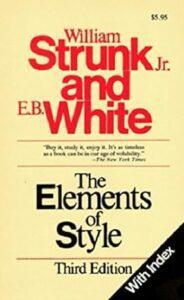
“Eats, Shoots & Leaves: The Zero Tolerance Approach to Punctuation” by Lynne Truss.
A witty and informative look at punctuation, this book explores the importance of proper punctuation in preserving the meaning of our words.

“Between You & Me: Confessions of a Comma Queen” by Mary Norris.
Written by a longtime copy editor for The New Yorker, this book provides insights into the challenges of editing and the nuances of language.
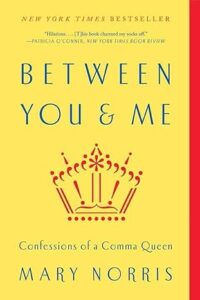
“Grammar Girl’s Quick and Dirty Tips for Better Writing” by Mignon Fogarty.
This practical guide offers easy-to-understand advice on improving your writing, making it a great resource for quick grammar fixes.

“The Mother Tongue – English And How It Got That Way” by Bill Bryson.
Bryson takes readers on an entertaining journey through the history of the English language, filled with fascinating anecdotes and facts.
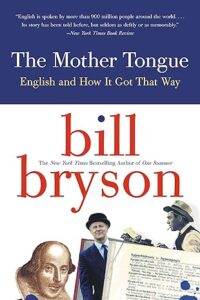
“The Sense of Style: The Thinking Person’s Guide to Writing in the 21st Century” by Steven Pinker.
Pinker uses the latest insights from linguistics and cognitive science to explain why certain writing styles are more effective than others.
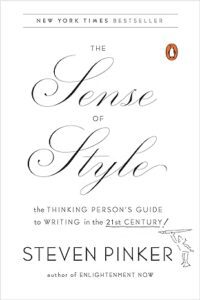
“Woe is I: The Grammarphobe’s Guide to Better English in Plain English” by Patricia T. O’Conner.
This accessible and humorous guide demystifies the complexities of English grammar and usage for the layperson.
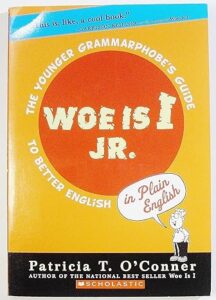
Each of these books provides valuable perspectives on the English language, from its history and evolution to practical tips on usage and style. Whether you’re a student, a writer, or simply a language enthusiast, these resources are excellent tools to enhance your understanding and command of English.
